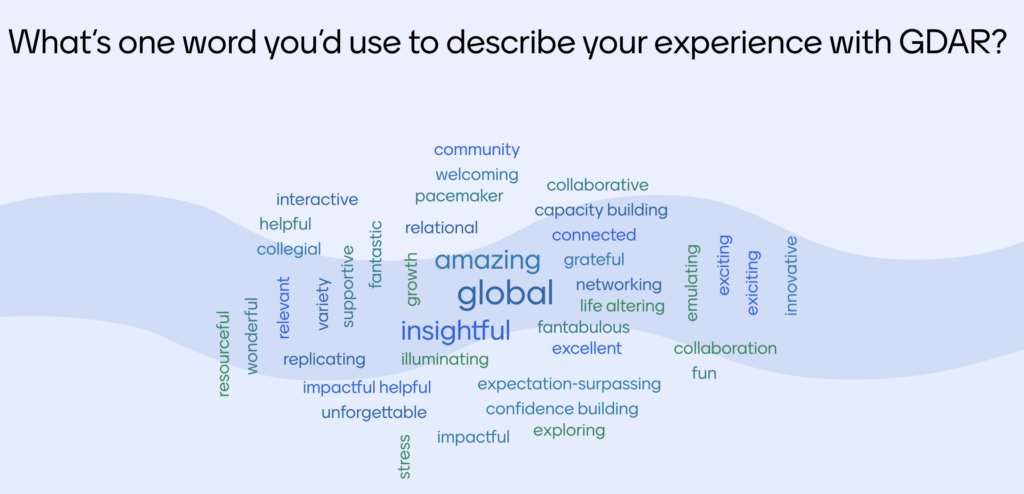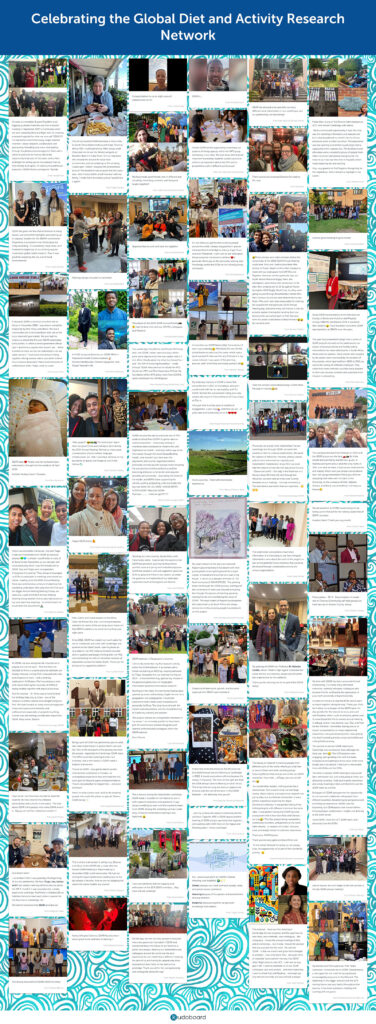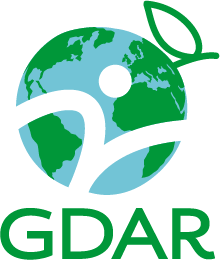Professor Tolu Oni, Director, GDAR Network
As GDARSpaces comes to a close after eight years of collaborative research, I find myself reflecting on what this journey has meant, for the consortium, for our partners, and for me personally.
When we began in 2017, the Global Diet and Activity Research (GDAR) Network started with a simple idea: that we could bring together researchers, policymakers, and communities across the Global South and North to prevent non-communicable diseases through healthier diets and increased physical activity. During that first phase, our focus sharpened. We started with diet and activity and moved towards a broader urban health agenda, recognising the importance of complex systems approaches to address the realities of rapidly growing cities.
Towards the end of that first phase, it became clear that the very settings facing the burden of unhealthy diets and inactivity were also disproportionately exposed to climate risks. We realised that any interventions designed to protect health had to be climate resilient if they were to be future proof. This recognition pushed us to confront the interlinked challenges of health, urbanisation, and climate, and to frame them as a syndemic. This shift marked a turning point that shaped GDARSpaces, where we explored not only the challenges but also the opportunities of tackling these issues together.
Over two phases, from GDAR to GDARSpaces, we built something remarkable. Our network spanned three continents, connected more than 60 members across seven countries, and rooted research in cities as diverse as Belo Horizonte, Yaoundé, Kingston, Kisumu, Lagos, Johannesburg, Cape Town, and Cambridge. Together, we generated new knowledge on how food and built environments shape health, co-designed interventions with adolescents and communities, pioneered citizen science approaches, and created evidence to guide policies that respond to local realities while connecting to global agendas.

Achievements and challenges
Our greatest achievement by a mile was in the early career researchers we nurtured, who are now doing amazing things. Seeing their growth, leadership, and innovation has been one of the most rewarding outcomes of GDAR, and gives me hope for the future of global public health.
We also strove to build equity into the heart of our research. Local researchers led studies in their own contexts, adolescents were supported as citizen scientists and advocates, and policymaking was approached in an intersectoral way, rooted in lived realities. Yet we must acknowledge, with humility, that power imbalances in global health persist and are structural. They necessitate more innovative funding models that can better support equitable partnerships. The first phase of GDAR gave us the flexibility to co-create a research agenda together, and I would like to acknowledge how critical this was. Without that space for joint agenda-setting, our work could not have been as meaningful.
Sustaining partnerships across time zones, disciplines, and institutional structures was not always easy. Short-term funding cycles often stood in tension with the long-term change we sought. Navigating the dynamics of Global North and South partnerships required constant reflection, humility, and sometimes difficult conversations.
Lessons learned
From these challenges came important lessons. We learned that rigour must be balanced with meaning: methods should be scientifically sound, but they must also reflect local contexts and lived experiences. We learned that data gaps remain a barrier, but also that creativity, from citizen science to community-based systems mapping, can transform how we generate knowledge. We learned that sustainable networks depend not just on producing evidence, but on building capacity and nurturing the next generation of researchers who will carry this work forward.
Legacy and hope
As I look back, I see GDAR’s legacy in three forms.
First, in the evidence we leave behind. More than 60 publications, countless blogs and briefs, and an evidence base that future researchers, policymakers, and communities can build upon. Second, in the relationships we nurtured. These were between institutions, across countries, and most importantly, with communities. They have outlasted individual projects and will continue to drive collaboration. Third, and most importantly, the people. Above all, the early career researchers who found mentorship and space to lead, the adolescents who became citizen scientists, and the policymakers who engaged with our findings. The network has seeded a generation of thinkers and doers who will keep working toward healthier, more equitable, and climate-resilient cities.
Personal reflections
On a personal note, directing GDARSpaces has been both humbling and transformative. I have learned as much from our adolescent citizen scientists as from our most seasoned academics. I have been reminded, time and again, that hope and imagination are as important as data and methods in shaping healthier futures. I am grateful to every partner, colleague, and community member who has been part of this journey.
Looking ahead
Although GDARSpaces formally ends here, the work does not. The questions we posed, about how cities can be designed for health and sustainability, how evidence can shape policy, and how global and local can learn from each other, remain urgent. My wish is that the spirit of GDAR continues to animate new collaborations, to challenge power dynamics in global health, and to inspire approaches that are inclusive, equitable, and transformative.
To everyone who has been part of this eight-year journey: thank you. GDARSpaces may be closing, but its legacy lives on in the evidence generated, the partnerships forged, and the futures imagined.
GDAR evidence report in full here


